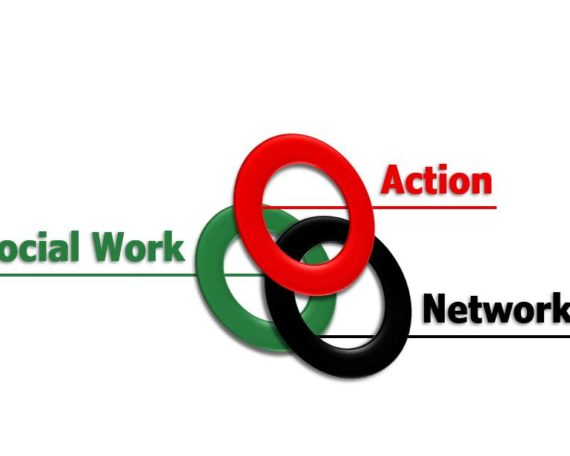A new Economic and Social Research Council funded report [1] from the Poverty and Social Exclusion project reveals that over 30 million people (almost half the in the UK population) are suffering some degree of financial insecurity. In terms of poverty amongst children there are currently an estimated 3.6 million children living in poverty in the UK today. That’s 27 per cent of all children under the age of 18, or more than one in four [2].
At a local level there are concentrations of child poverty and for 100 wards in the UK between 50 and 70 per cent of children are in poverty [3]. Here in the West Midlands for example one in five children live in households with parents who are out of work – just over 19 per cent [4]. A useful analysis has recently been produced by the ‘End Child Poverty’ campaign that graphically showed the effects of localised poverty. Their recent study [5] demonstrated that in areas like Nechells in Birmingham up to 47 per cent of its children are living below the poverty line. We should also not forget that poverty affects different parts of the community disproportionately. In Wolverhampton, for example, 26 per cent of the population are from a BME community but make up about 40 per cent of the homeless cases seen by the local authority [6]. Disabled People Against the Cuts make the same point [7].
Estimates vary but most commentators agree that Poverty and destitution is set to increase from the 1st April with the implementation of the benefit reform programme. Using the governments own figures from the impact assessment of the 1 per cent rise in the Welfare Benefits Up rating Act 2013 as many as fifty social policy experts recently stated that this will push 200,000 more children into poverty [8]. The impact on family budgets of the ‘bedroom tax’ is becoming better known and we should all support the bedroom tax protest movement that has sprung up in the last few weeks. The West Midlands is one area that has an acute shortage of one bed-roomed property – families have no-where to go and typically face an additional £44 a month if they are under occupied. On an estate like Low Hill in the north of Wolverhampton, estate managers have worked out that out of 850 households, 150 will be hit by the bedroom tax [9]. 
RABBITS IN THE HEADLIGHTS
I recently attended a welfare reform briefing and found that, somewhat worryingly, I was the only social worker present. With the abolition of the social fund, DLA, the bedroom tax, the benefit cap, the introduction of universal credit being paid monthly and so on, some social workers are in for a shock whilst others are turning a blind eye to that going on around them. In recent years with each benefit cut the government has produced publicity and information to explain the changes but the hard-nosed Con-Dem Government clearly does not see this is a role for them. In SWAN however we do have a role to play in order to combat, educate and agitate for resistance with our colleagues stuck facing the headlights and the headlines of the benefit cuts bearing down on them. The extent to which we can get people out on the streets and involved in protest and opposition will be difficult but I would argue we have a ‘professional’ duty to do so by putting the case that if social workers they really want to do something about it – they have to act politically.
THE ROLE OF FOOD BANKS
One thing is certain – is that come the first of April our duty desks and receptions will begin to see an increase in callers facing hunger and destitution. The people, our client base, the very children and families we know well already, will be expecting social workers to respond to exceptional times.
For some that may well be a point in the direction of the local food bank. The Trussell Trust, the UK’s leading food bank distribution charity, estimates that in the year 2011-12 food banks fed 128,687 people in the UK and it forecasts that will rise to more than 230,000 during this year [10]. In Wolverhampton as elsewhere food banks have grown out of all proportion based on the generosity of local people. The Good Shepherd ministry in Thornley Street Wolverhampton now provides 4,000 5,500 food parcels every month [11]. Whether we like it or not food banks are here and are playing a valuable role we cannot ignore.
SECTION 17 PROVIDES FOR FULL CASH SUPPORT
A little known, or should I perhaps say a not forgotten, provision buried in section seventeen of Children Act 1989 has been the ability for local authorities to make cash payments for children in need. This, I should remind readers, is a provision under part three of the act that:
‘may include providing accommodation and giving assistance in kind or, in exceptional circumstances, in cash’
We are in exceptional circumstances – although worse may come. Alarming still are reports from our friends in the voluntary/third sector doing sterling and very difficult work with undocumented and destitute families where much testing as to the limits and possibilities of section 17 has been going on. In a recent case in one West Midlands authority, where the advocate for a destitute family facing deportation was astonished to hear from the social worker that she had never heard of section 17. This is part of a wider difficulty. Dave Stamp from Birmingham’s Asylum Support and Immigration and Resource Team (ASIRT) argues that significant numbers of social workers and their managers themselves appear to have little idea of either their duties or powers under this legislation. One assistant director of children’s services recently informed ASIRT that ‘to provide to an otherwise entirely destitute family would be ‘limited’ since Section 17 ‘is not designed to be a means of providing full financial support for whole families’ [12].
Whilst we should be under no illusions about local authority budgets, and evidence in the West Midlands from SWAN freedom of information requests shows that section 17 budgets are shrinking, we should start making demands on these budgets whilst they still exist – or at least social workers should try until proven otherwise. Using the law as a tactic has it limits but in this case it opens some possibilities. It is, in my view, entirely wrong to state that section 17 was not designed to provide full financial support – on the contrary – that’s exactly what it’s for.
Two recent cases, Clue Judgement [2008] and R(VC) v Newcastle City Council [2011] support the case and found against the local authorities attempts to wriggle out of its S17 duty. The Newcastle judgement explicitly stated that the UKBA’s section 4 support provision- £35 per person in cashless support- was entirely inadequate to meet children’s needs, and should not be used as a substitute for section 17 support [13].
Other national organisations are arguing that S17 is a safety net for children in need. For example, Women’s Aid has a useful guide and set of arguments for women and children facing domestic violence. These can be made to help women and their children leave abusive situations or survive within them. Such assistance might include; cash for new clothes for children, cash for travel to get away from a violent man, assistance with fitting new locks, getting a telephone or alarm system and transport to a refuge [14]. Herfordshire on the other hand accept that S17 is appropriate for use where 16-17 year olds are homeless [15].
There is another debate and another struggle to be had as to how much cash payments should be provided but – at the very least – they should be based on a test of reasonableness and pre-2013 income support rates. Arguabley we should be demanding under a test of reasonableness that a daily rate per child should reflect the actual costs of bringing up children. The Child Poverty Action Group argues [16] that in 2012 it costsaround £150 a week (averaged for a child across all ages and including childcare costs and housing) or £21.42 per day per child.
THEY MAY CONTROL IT BUT WE SHOULD SPEND IT
Finally we should all be aware of each local authority duty under the Child Poverty Act 2010 to complete a needs assessment and develop a strategy to address child poverty. How this relates to the existence of shrinking section 17 budgets remains to be seen but again we need to explore and create opportunities to undermine the government’s strategy. As I often say to my manager ‘you might control the budget but my job as a social worker is to spend it!’. These and other related issues including the localisation of the social fund and the role of social workers will be dealt with in the second part of this article to follow. As with all good social work practice it’s time to be creative – only that for us as oppositionalists – this means developing ‘creative resistance’ and pressure points on the government’s welfare reform agenda from both within and against the local state that will lead to its eventual collapse.
Follow Simon on twitter: @simoncardy
References:
[1] Gordon et al (2013) ‘The Impoverishment of the UK’ Poverty and Social Exclusion (see http://www.poverty.ac.uk/).
[2] Households Below Average Income, An analysis of the income distribution 1994/95 – 2010/11, Tables 4.1tr and 4.3tr. Department for Work and Pensions, 2012
[3] Child Poverty Map of the UK, End Child Poverty, March 2011
[4] A Profile of Child Poverty 2010 ONS
[5] End Child Poverty Campaign News 20th February 2013
[6] ‘Homelessness Strategy 2011 – 2014’, Wolverhampton City Council (Wolverhampton, Wolverhampton City Council, 2011), p. 14.
[7] Disabled People Against the Cuts – Policy statement (see http://dpac.uk.net/about/dpac-policy-statement/).
[8] ‘Benefit cuts putting 200,000 children in poverty must be stopped, experts say’ Guardian 27th March 2013
[9] ‘The human cost of the bedroom tax’ Guardian 8th March 2013
[10] The Trussell Trust (see http://www.trusselltrust.org/foodbank-projects)
[11] Stephanie Spiers ‘Food Poverty Wolverhampton’ blog 12th August 2012 (see; http://prezi.com/min4lfbe5que/food-poverty-wolverhampton)
[12] Stamp, D. (2013) ‘Asylum and the race to the bottom’ The Justice Gap (see http://thejusticegap.com/News/asylum-and-the-race-to-the-bottom/)
[13] ibid.
[14] Providing support for ‘children in need’: Section 17 of the Children Act 1989 6th June 2008 (see http://www.womensaid.org.uk/domestic-violence-articles.asp?section=00010001002200020001&itemid=1450)
[15] Homeless 16-17 year olds: online procedures (see: http://hertschildcare.proceduresonline.com/chapters/p_homeless_16_17.html)
[16] The Cost of a child in the 21st century. CPAG 2012 (see http://www.cpag.org.uk/sites/default/files/CPAG%20Cost%20of%20a%20Child%202012.pdf)

